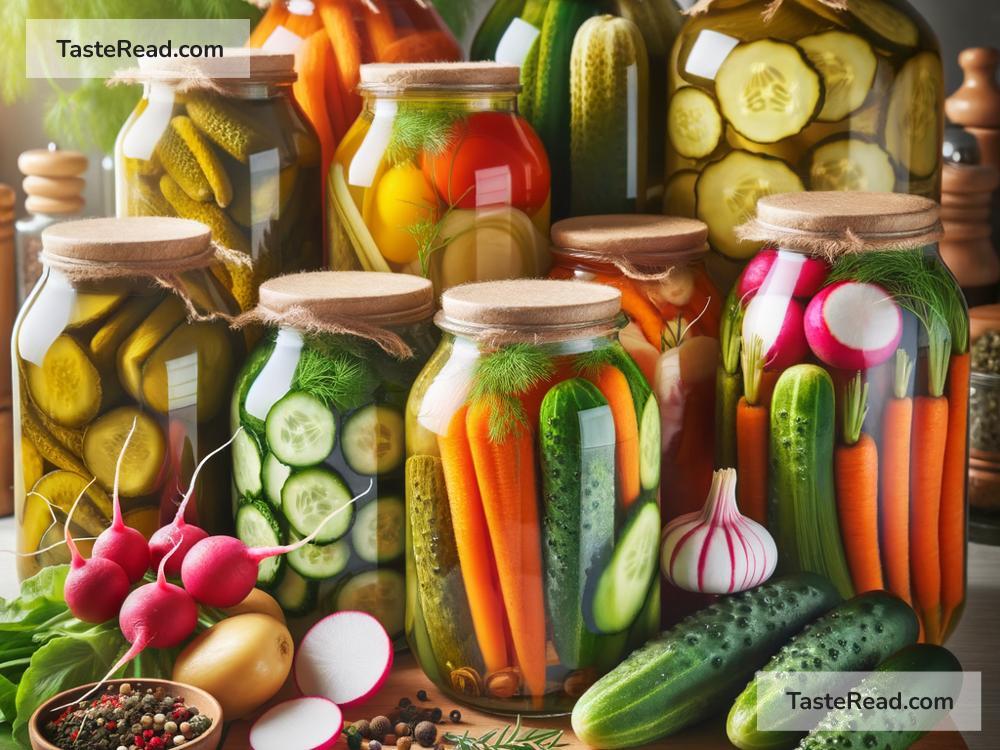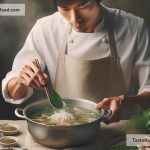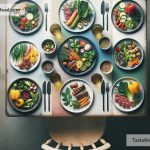In the festive world of kitchens and cooking, there’s a secret ingredient that has the power to transform a good dish into an unforgettable one. That secret? It’s balance. And no, I’m not talking about the kind of balance you need to stop yourself from tumbling over, but the delicate harmony of flavors that dance on your tongue. Discovering this balance wasn’t easy, but it was my adventure into the world of pickling that taught me how to master it.
My journey began with a simple batch of cucumbers and the desire to transform them into crispy, tangy pickles. Little did I know, this endeavor would become my classroom for understanding the art of balancing flavors.
The first lesson was about the base of pickling – the brine. A mixture of water, vinegar, salt, and sometimes sugar, this liquid concoction is what gives pickles their punch. My initial experiments were, to put it mildly, disastrous. Some pickles turned out too salty, some too sour, and some were so sweet they could have been dessert. But as I tinkered with the ratios, a pattern began to emerge. I discovered that the secret to a well-balanced brine was not just about the amounts of each ingredient but how they interacted with each other and the vegetables they were meant to preserve.
For example, increasing the vinegar not only added tartness but also a sharpness that needed to be tempered with just a bit more sugar than I initially thought necessary. Conversely, too much salt could be counterbalanced with a dash more vinegar or a bit less water. It was like a culinary see-saw, constantly moving and adjusting until it found its perfect equilibrium.
As my confidence grew, so did my ambition. I moved beyond cucumbers to carrots, onions, beets, and even fruits like apples and pears. Each new food brought its own unique set of challenges. Some, like apples, were naturally sweet and required less sugar in the brine. Others, like beets, had a deep earthiness that could be enhanced with the right amount of salt and vinegar.
Through these experiments, I learned that balancing flavors was not just about the brine but also about understanding the natural characteristics of what I was pickling. This revelation was a game-changer for me. It meant that I wasn’t just following a recipe; I was engaging in a dialogue with my ingredients, listening to what they needed and responding accordingly.
Perhaps the most rewarding aspect of this journey has been applying these lessons beyond the realm of pickling. I began to see how the principles of balance could be applied to almost any dish. A splash of lemon juice could brighten a rich sauce, a pinch of salt could enhance the sweetness of a dessert, and a bit of chili could add depth to a bland soup.
Experimenting with pickling taught me that cooking is not just a science but an art. It’s about understanding not just the chemistry of ingredients but also the nuances of flavor and how they play off each other. It taught me to be bold, to experiment, and to trust my palate.
But perhaps most importantly, it taught me patience. Good pickles, like well-balanced flavors, can’t be rushed. They need time to develop and mature. And so do we as cooks. Each batch of pickles was a stepping stone, an opportunity to learn and grow. With each success and failure, I became more adept at balancing flavors, not just in my pickles but in all my cooking.
In the end, my pickle experiments taught me that balance is not just about the ingredients in a dish but also about the journey of the cook. It’s a constant exploration, a perpetual quest for that perfect harmony of flavors. And while I may have started this adventure trying to make a batch of simple pickles, what I ended up pickling was something far more valuable – my skills as a cook and my appreciation for the delicate art of balance.


